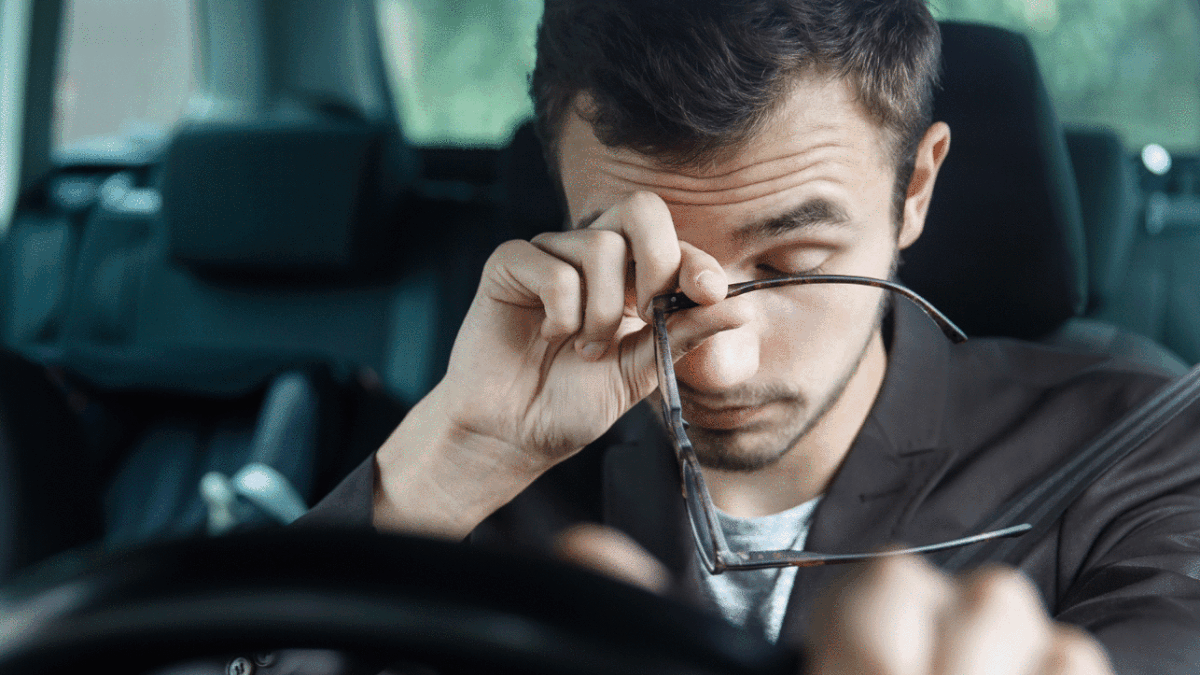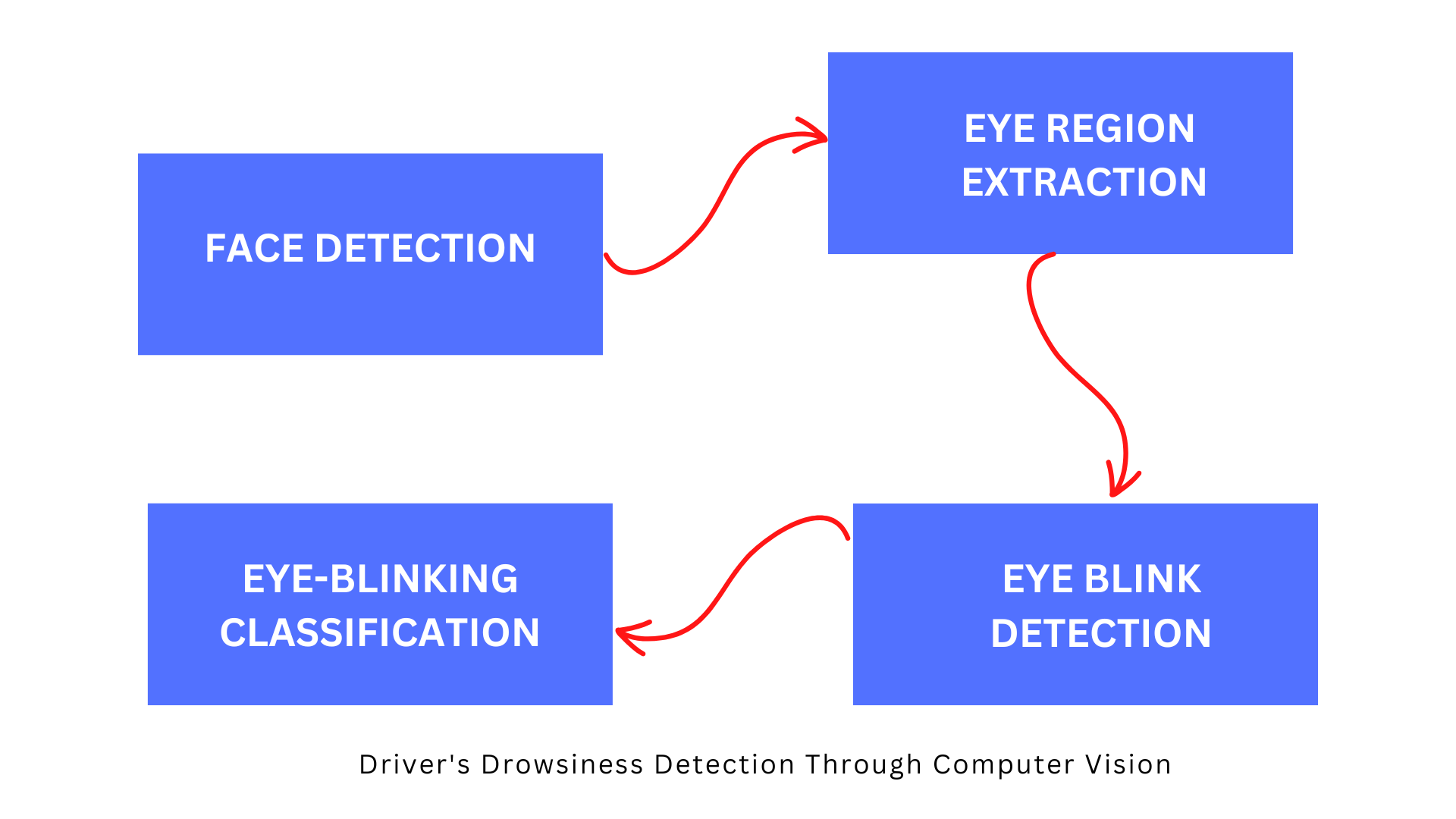Drowsiness Detection Systems: A Comprehensive Guide
Feb 10, 2023
Drowsiness is a major cause of road accidents. To prevent drowsy drivers from getting behind the wheel, it is crucial to develop systems that can detect signs of driver fatigue and remind them to take a break if necessary. The system uses computer vision and machine learning algorithms to detect when a driver is drowsy and alert them to take a break. The system uses a webcam or any other video recording device to capture images of the driver's face, which are then processed to detect drowsiness.
How Drowsiness Detection Systems Work
The driver drowsiness detection system consists of several critical components, including image capture, face detection, facial landmark detection, and drowsiness detection. Let's understand each component in detail.
Image Capture
A webcam or any other video recording device is used to capture images of the driver's face. The images are captured continuously at a fixed frame rate of 20fps. The infinite loop in the detection procedure ensures that each frame is captured, and the drowsiness of the driver is detected in real-time.
Face Detection
Once the images are captured, the next step is to detect the face in the images. The system uses the face detector to detect the face in the images.
Facial Landmark Detection
The next step is to detect the landmarks of the face, such as the eyes and lips. The system uses a facial landmark detector to detect the landmarks in the images. The landmarks of the eyes are tracked continuously to detect drowsiness.
Drowsiness Detection
The final step in the detection procedure is to detect drowsiness. The images are passed to the image processing module, which performs face landmark detection to detect the distraction and drowsiness of the driver. The system uses the landmarks of the eyes to detect drowsiness and alerts the driver to take a break when drowsiness is detected.
Drowsiness detection systems use various sensors to monitor the driver's physiological and behavioral indicators, such as eye movements, head movements, heart rate, and skin conductance. The most common type of drowsiness detection system is based on the analysis of the driver's eye movements. This method is called the Eye Aspect Ratio (EAR) and it involves measuring the ratio of the distance between the eyes and the width of the eyes. When a driver becomes drowsy, their eyes tend to close or droop, which changes the EAR value. If the EAR value drops below a certain threshold, the system alerts the driver.

Advantages of Drowsiness Detection Systems
- Prevent Accidents: Drowsiness is one of the leading causes of road accidents. By detecting drowsiness and alerting the driver in time, drowsiness detection systems can prevent accidents and save lives.
- Improve Driver Safety: Drowsiness can affect a driver's ability to make decisions, react quickly, and stay focused on the road. Drowsiness detection systems can help drivers stay alert and improve their safety on the road.
- Reduce Driver Fatigue: Long hours of driving can be tiring, and drowsiness can result in decreased productivity and an increased risk of accidents. Drowsiness detection systems can help reduce driver fatigue by alerting drivers when they need to take a break.
Limitations of Drowsiness Detection Systems
- False Alarms: Some drowsiness detection systems may generate false alarms due to factors such as bright lights, sudden movements, or changes in the driver's posture.
- Reliance on Technology: Drowsiness detection systems rely on technology, which can malfunction or fail. Drivers should always be aware of their own level of drowsiness and take action if necessary, even if the system is working properly.
- Cost: Drowsiness detection systems can be expensive, especially high-end models with advanced features.
Choosing the Right Drowsiness Detection System
When choosing a drowsiness detection system, consider the following factors:
- Accuracy: Look for a system with a high level of accuracy in detecting drowsiness.
- Ease of Use: The system should be easy to use and understand, with clear and concise alerts and instructions.
- Cost: Consider your budget and look for a system that offers good value for money.
- Compatibility with Your Vehicle: Make sure the system you choose is compatible with your vehicle and can be easily installed.
In conclusion, drowsiness detection systems have the potential to significantly improve driver safety and reduce the risk of accidents caused by drowsy driving. However, it's important to choose the right system and understand its limitations. By following the tips outlined in this article, you can find the best drowsiness detection system for your needs and stay safe on the road.
Learn how to detect drowsiness using YOLOv8 by visiting our Augmented Startups store now. Click the link to explore: https://store.augmentedstartups.com/a214a035-f3ac-432a-ba2f-d49636908862
Stay connected with news and updates!
Join our newsletter to receive the latest news and updates from our team.
Don't worry, your information will not be shared.
We hate SPAM. We will never sell your information, for any reason.




![AI In Agriculture [NEW]](https://kajabi-storefronts-production.kajabi-cdn.com/kajabi-storefronts-production/file-uploads/themes/2153492442/settings_images/f3fdf8-e3fc-6bce-d26-2adc20ba5c0a_1e6bab8-d7b-d76c-e28c-fa6d513e45d_7138c16-f641-8fdf-e206-2bcac503bc5_AI_AGRI.webp)


